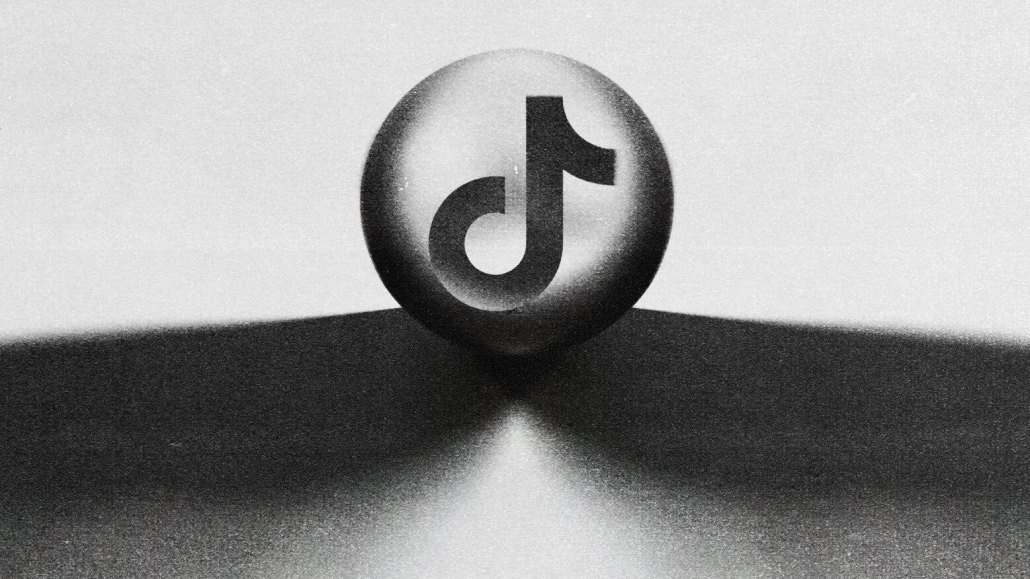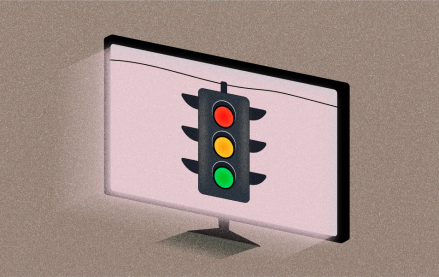How U.K.-based creators took advantage of the U.S. TikTok outage

As U.S. creators looked to diversify their online presences following the Jan. 19 TikTok outage, creators in the United Kingdom increased their posting activity in a bid to fill the potential void.
In the week following the United States’ Jan. 19 TikTok outage — the seven days between Jan. 19 and Jan. 25 — video creators in the U.K. posted 15 percent more content than they did during the seven days leading up to the ban, according to figures shared with Digiday by influencer marketing agency Billion Dollar Boy. This data was the result of a report created by the agency on Jan. 31, which analyzed the activity of over 10,000 creators across the U.S. and U.K. following the outage.
Billion Dollar Boy’s report also found that TikTok creators in the U.S. had decreased their posting activity by 3 percent in the week after Jan. 19, creating a potential content void that some U.K. creators rushed to fill. During the same period, U.S. creators’ posting activity increased by 16 percent on Instagram Reels and by 14 percent on YouTube Shorts.
“Despite Trump pausing the ban, there’s still uncertainty there for U.S. creators,” said Billion Dollar Boy CEO and co-founder Thomas Walters. “In contrast, in the U.K., you had the government actually coming out and announcing, ‘We don’t have any plans to ban TikTok; we’re not considering that.’ So they had that kind of institutional certainty, where the U.S. creators did not have that, and I think that’s a big driving factor.”
U.K. TikTok creators’ spike in activity following the U.S. outage was also an indirect result of U.S. creators’ push to diversify their audiences across other platforms in the lead-up to the potential ban. As the ban loomed, this push to diversify became the sole focus of many U.S. creators’ TikTok content, hurting their performance in favor of more entertainment-focused content from creators in the U.K.
“If your feed is just people saying, ‘Please leave the platform,’ TikTok doesn’t want to distribute that; TikTok wants to distribute great creative content,” said Tom Sweeney, global vp of influencer marketing for U.K. media agency Brainlabs. “The U.K. creators were continuing to do that, and as a consequence, the performance of their content will have spiked — because U.K. audiences will have obviously consumed more U.K. creators, but U.S. audiences will equally have been consuming more U.K. content in that period.”
Although U.K.-based TikTok creator Aydan Al-Saad did not step up his posting activity during the week following the outage — he posts one video per day — he told Digiday that his viewership had spiked between Jan. 19 and Jan. 25. (Although Al-Saad declined to share specific numbers, his most popular video of the week prior to the outage achieved 194,700 views, compared to roughly 207,000 views for his most popular video of the week following the outage.)
“My For You Page became all about the TikTok ban, and then, obviously, it happened, so there was this opportunity for other content,” he said. “It kind of changed that window of 19 hours, so I definitely saw an uptick in my viewership in that period.”
U.K. TikTok creator Em Wallbank gained 48,000 followers in the week following the Jan. 19 outage, a boost that she attributed to an increase in her posting rate during and after the potential ban, as well as a viral post based on the film “Wicked” in the week following the outage that she believed may have offered TikTok users a respite from the glut of ban-related or political content from U.S. creators.
“For myself and a lot of my U.K. friends, our For You Pages were full of American conspiracy theories and reactions to the ban — and then, subsequently, my entire For You Page for like two weeks was just reactions to the inauguration from both sides,” she said.
TikTok is not out of the woods yet regarding its status in the U.S., with a true ban remaining a very real possibility once Donald Trump’s 75-day halt comes to an end. Even if some creators in the U.K. are taking advantage of the situation in the short term, many British creators still rely on the U.S. TikTok audience for a large chunk of their viewership and engagement. If the ban goes through in the U.S., it could threaten U.K. creators’ sponsorship deals, increased posting activity or not.
“We’ve got about 60-65 percent of our audience based over in America, so that is a little bit of a risk for us, where our community size is going to drop from half a million followers to potentially under 250,000,” Oli Hills, CEO of U.K. influencer marketing agency Nonsensical, said, referring to his company’s LGBTQ-focused TikTok account Endless Pride. “But on the flip side, I think that makes it even more attractive to advertisers, who know that if they do advertise to that community, they know for a fact it’s going to be U.K.-based. It gives us more opportunity to work with just U.K.-based brands.”
More in Media

What publishers are wishing for this holiday season: End AI scraping and determine AI-powered audience value
Publishers want a fair, structured, regulated AI environment and they also want to define what the next decade of audience metrics looks like.

Media giant Essence launches a marketplace for Black women-led brands
Essence has launched WeLoveUs.shop, a new online marketplace dedicated to Black women-led brands.

In Graphic Detail: The state of AI referral traffic in 2025
The stats reveal a new audience pipeline forming outside of traditional search and social platforms.








